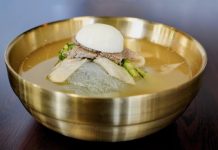 Looking for a specific wine in a fine Detroit area shop recently, it dawned on me that it has been a long time since I’ve tasted a genuinely bad wine. By bad, I mean flawed or poorly made.
Looking for a specific wine in a fine Detroit area shop recently, it dawned on me that it has been a long time since I’ve tasted a genuinely bad wine. By bad, I mean flawed or poorly made.
Sure, I’ve tasted a few I didn’t like. Wines I thought needed more of this, or less of that. Wines that are over the top in oak-aging or excessive malolactic fermentation.
But bad wines? I can’t think of any.
When I began writing about wine and then judging competitions in the mid 1980s, it was a different story. Back then, it was generally accepted that 5 to 10 percent of wines tasted, judged, or reviewed had some sort of flaw. It used to be routine at competitions to pass those bad wines around from judge to judge and across panels simply for amusement.
There is an oft-repeated story from one of the early Michigan Wine Competitions in the 1970s about a snotty New York judge invited to participate in Michigan’s new wine competition. He scrawled on a comment card about a winery’s sweet Riesling: “Congratulations. Your horse has diabetes.”
Comments like “What were these guys doing?” and “Who do they think would drink that?” were somewhat routine.
I don’t think I’ve heard that at a recent competition — I do six to eight a year — or even in more casual wine events and tastings. A bad wine from Michigan, or anywhere for that matter, is just plain hard to find. The reasons for this more level and certainly higher playing field of winemaking is twofold: technology and education.
The caliber of education for winemakers, and the number of universities that have launched or upped the quality of their viniculture and viticulture programs (the production and study of grapes for winemaking), is exponentially greater. And winemaking equipment and the technology now available to wineries takes a lot of what used to be guesswork, out of the equation.
We now get far purer and better-made wines. Does greater technology impact regional distinction in wine? Doesn’t it risk neutralizing and homogenizing what we have come to like?
Isn’t that what marks the Leelanau Peninsula from Old Mission Peninsula, or Baroda wines from Fenn Valley wine? Or Napa from Sonoma, and Piedmont from Veneto?
The work of sommeliers, wine writers, and wine judges has indeed changed. But for the better. We can concentrate far more on what make wines great, instead of what makes them bad. It also has sent us more deeply into the spectrum of identifying specific characteristics to help consumers understand what they are buying.
Yes, we do need to use terms like “rose petal aroma,” “bracing acidity,” or “honeydew melon on the back-palate.” Those are part of the only effective lingo we have to bring a reader some sense of what is in the wine, short of visiting your home and physically pouring you a glass.
Next time you read “It was a blousy little wine of questionable breeding, but I think you’ll be amused by its pretensions,” you should indeed be amused.
Ěý
|
| Ěý |
|








